

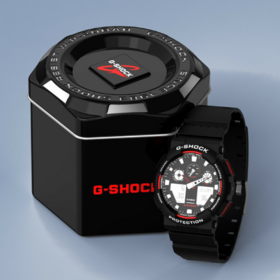
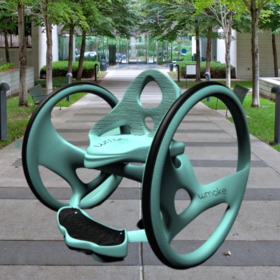


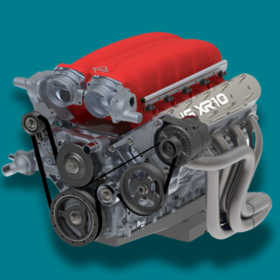
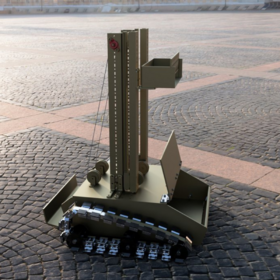
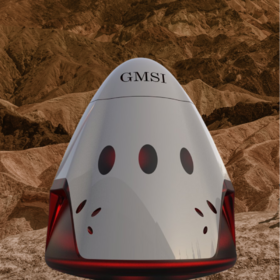
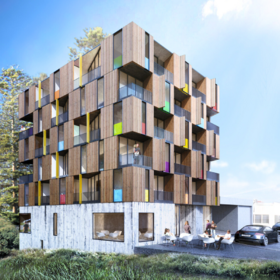
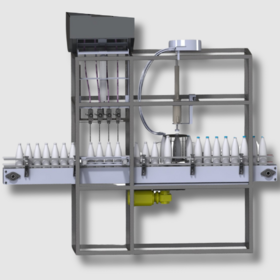











2D electrical drafting services are an essential part of designing new buildings, as well as new lighting systems, retrofits, and other related designs. Consumers are more aware than ever of the carbon footprint of the businesses surrounding them, and a push for their favorite businesses to become greener has led to an emphasis on energy conservation.
Other reasons to hire an electrical engineer to handle your drafting include reducing errors, saving money through a more streamlined process, and hiring a specialist for unique electrical situations.
Whether you’re trying to make your business more sustainable or are simply trying to get a new electrical device off the ground, finding competent CAD designers to help you is essential.
Cad Crowd’s expert drafters can help you achieve your goals by creating accurate 2D designs that fit your needs perfectly.
If you already have an architectural design service planning out the details of a building, you may think you can skip 2D electrical drafting services. Electrical drafting, however, requires special skills that an architect may not be able to perform as well.
Electrical drafters are engineers who specialize in wiring and how electricity works. They have the skills needed to not only plan out the wiring of your building or project but to do it in such a way that it has maximum efficiency.
When electrical wiring is mapped out by a professional, the process for everyone else on the project goes a lot faster. This can save on hours needed for more expensive services, while also making the electrical wiring more efficient overall. Most importantly, these services can help avoid costly mistakes after the project is already under construction.
Almost any project that requires electricity can benefit from these services. A simple 2D map of how wiring and other components should be laid out can make a big difference in how smoothly the rest of your project goes.
An electrical drafter creates a diagram showing the layout of wires for construction workers and other team members to use. This can be for a new building, repairing an old building, or installation guides for new equipment.
Electrical drafters are needed in many different fields, from utilities and construction to the auto industry.
Even if you have an unusual project, an electronics design service can be of help in creating solutions for your project. Many new products require electrical circuits to function properly. An electrical engineer can not only help plan this out but also make sure that’s easy to manufacture. Sometimes even small changes can make a big difference in electrical usage.
Below are just a few of the services most 2D electrical drafters are familiar with, and regularly work in.
If you’re planning to build something that requires electricity, chances are you will need electrical drafting services at some point. Electrical drafting services are used in almost every building project, including residential, commercial, and industrial buildings.
Even if you have a full team of architects and construction workers on staff, these people rely on electrical schematics to help them plan what to build. Products that require electricity also benefit from 2D drawings that indicate how circuits work and other important features for the manufacturer.
Our 2D drafters can help with a variety of different projects, including lighting, fire and safety, LAN lines, and more.
Electrical site layouts and material lists
One of the most common requests for 2D drafting services is the creation of an electrical site layout. With this service an electrical engineer carefully maps out the site layout, providing details of where and how everything should be laid out.
This service often includes material lists, so you can have an idea of what you need to purchase and how much it will cost in materials to start your project.
Full power distribution layouts
Distribution is the final phase of electricity output. It’s also where a lot can go wrong if distributions aren’t laid out properly. Full power distribution layouts show connection loads and locations, loading patterns, utility interfacing, and other details.
It’s especially important to get this right because if the total demand for lighting is taken into account, but not total electrical demand, it can result in electrical load problems. This is why hiring a professional is extremely important.
Security system wiring diagrams
Safety is an important aspect of most buildings. Wiring diagrams for a security system show how a security system should be set up. These diagrams help visualize the safety of the building as a whole, minimizing mistakes and making it clear what needs to be done to secure the building.
Without a wiring diagram, it’s easy to make mistakes that end up costing more down the road, such as placing an alarm with no way to connect it or forgetting a security feature entirely.
Lighting system wiring diagrams
Most buildings require lighting, and not all lighting systems are created equal. Electrical drafting services can be a big help in making lighting more efficient, making the building more sustainable, and requiring less electricity overall.
With today’s demand for more sustainability in business, lighting systems that use the least amount of energy possible while still providing adequate light can provide an advantage.
Even without sustainability as a focus, wiring diagrams are essential to wiring a building properly so that the lights work and the load is evenly distributed across the entire building.
Control panel designs
Control panels are another example of projects that greatly benefit from electrical engineering. An electrical engineer can make sure the design uses energy as efficiently as possible and works properly without damage to itself or the building.
There’s a great need for control panels in both industrial and commercial settings, and Cad Crowd’s engineers are familiar with both. They can handle PLC, VFD, distribution board, power factor, AC drive, and wire drawing machine control panels with ease.
Testing
A diagram itself is only useful if it works, and works well. Part of an electrical engineer’s job is to test the layout. They will check for how well the layout works, and see if there is any way to make it better or more efficient.
Testing is one of the most important parts of an electrical engineer's work. During this phase the electrician is very thorough, running an analysis of the diagram and checking for problems. In a team situation, the diagram may be looked at by a senior member as well to check for problems.
Common software used
Electrical engineers need special software to help them make 2D diagrams. Which program the engineer prefers is up to the individual, but common software includes EdrawMax, ETAP, AutoCAD Electrical, and SolidWorks Electrical Schematics.
These programs have a variety of tools that can help an engineer make detailed drawings and material lists to help in mapping out a new schematic. If you need a particular software used by an engineer, it may be useful to communicate with potential candidates and ask what software they prefer to use.
Most engineers will be familiar with more than one kind of software and may use a combination if needed to help make a layout, material list, or run an analysis on the project. Some engineers may specialize in unique software if they have experience in something specific, such as control panels, over general lighting layouts, or other construction-related projects.
Cad Crowd has top-tier electrical engineers available to help you with your project. Each engineer will work with you through a process designed to help you get the diagram you need. The creation process follows these steps to get your project off the ground:
1. Electrical engineer contacts you about the project
The first step will be for the electrical engineer to speak with you about the project and learn more about what it is you’re looking for. Clear communication is very important in any project, to help define the scope of the project and get needed details. This meeting can be held in-person or virtually, depending on your needs.
2. Data is received
For the electrical engineer to work on the project, they’ll need some data from you. What information is needed will depend on what sort of project it is. If the electrical schematics are for a fire detector, you might need the product information related to it. For buildings, it might mean site surveys, building schematics, and other details.
Submitting your existing data is always helpful in making the project as accurate as possible. The more information you have, the better an electrical engineer will be able to serve you.
3. Standards are checked
Electrical schematics often need to follow local ordinances and codes, as well as global ones. Your electrical engineer will check these codes to make sure your project is legal and will pass any inspections.
Electrical codes will always be followed when creating a design, so that you don’t end up back at the drawing board when a permit is rejected. This can help speed up the process, save money, and avoid serious mistakes.
4. A rough draft is made
Your electrical engineer will create a design that is compliant with all laws, which is then reviewed by a senior team member for accuracy. Any adjustments the senior team member thinks need to be made will be done.
5. Submitted to the client
Once the draft has been created and reviewed, it will be sent to the client for their inspection. Feedback from the client is welcome, and any questions or concerns will be addressed. At this stage any changes the clients want made are welcome, and open communication is critical for the success of the project.
6. Revisions
If the client wants any changes made or has concerns, this is the stage where it will be fixed. Finishing touches will be put on the diagram, and the project will once again be reviewed by a senior team member to insure it remains compliant with all laws.
7. Final submission
Once this is done, the final work is returned to the client. At this stage it’s very rare for corrections to be made, but if there are any these will be done as quickly as possible to help keep the client on their timeline.
Outsourcing electrical engineering diagrams is a very practical solution for most businesses. Outsourcing allows you to pick and choose the talent for your project and to avoid paying a year-round salary for an engineer if you only need them for occasional projects.
Cad Crowd carefully selects design engineersfor their team, so that only the best are on staff. Engineers need to meet high standards for quality to be part of this select group of people. When you order a project from a Cad Crowd engineer, you know you’re getting quality. If you need a specialist for a specific type of project, chances are there’s an engineer available who not only has experience in electrical engineering but in that particular type of project. You’ll be able to find a specialist unique to every project you start through outsourcing.
Flexibility is one of the greatest benefits of outsourcing to Cad Crowd. Whether you have a tiny project that just needs a single engineer, or you have a large project that may need a full team, Cad Crowd has the engineers available to fit your needs.
Cad Crowd is also secure and private, allowing you to keep your sensitive data safe while achieving your goals. Cad Crowd’s engineers have worked on hundreds of different projects, and are familiar with almost every style of electrical engineering out there. If you’re in need of something specific, they can help. Get a personalized quote today.
Finding the right freelancers to handle your electrical schematic drawings is no small task. You need to find a designer whose skills and knowledge meet your firm’s needs.
From start to finish, our pool of vetted CAD designers and freelancers will go above and beyond to ensure your project is successfully completed. Our designers are based all around the country and Canada. They all specialize in a variety of disciplines, allowing them to offer a well-rounded approach to every project they take on. Many of them have years of experience working on project of various sizes and levels of complexity.
We guarantee that all our professionals will provide deliverables that meet and exceed your expectations.


